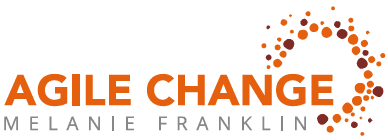This week I devised my public training course schedule for the next 3 months, which forced me to estimate future business demand and where this would be coming from. As part of this process, I identified the following “certainties” which I thought you might find useful to compare with your own situation and how you are looking to the future:
It is a more competitive market than before. Talking to the recruitment companies, the big theme is candidate selection, because there are so many more candidates for every job. I last saw this during the financial crisis, when recruiters added in many more factors to filter candidates at the first stage of the recruitment process.
One of the easiest filters to apply is qualifications so even if you have a strong belief that your experience is more valuable than a certificate, remember that you may not get far enough in the process to demonstrate your abilities because more qualified candidates have been selected for interview.
Even during lock-down, new initiatives have started, and my quick survey of the many companies I work with indicates there is pent up demand to start more, with a likely start time of September. This delay takes the pressure off and gives Finance Directors the chance to work through the numbers and Operational Managers time to adjust their staffing requirements and bring back furloughed workers.
It is worth considering what kind of initiatives are going to get authorised, and again, soundings from all those involve indicate that streamlining and automation are at the top of the list. Many executives have had a hands-on experience of the state of digital transformation in their organisations and it appears to have left all of them hungry for more.
For those organisations who had previously made little or no progress with digitising their services, the pressure of closing their offices and moving everyone to virtual working has proven how short sighted they have been. For those further on the journey, the transition to virtual working has been easier, but it has also shown up the gaps in all areas and there are plenty of improvements planned.
This includes streamlining the supply chain, increasing the variety of suppliers to ensure more flexibility, targeting customers outside of specific geographic constraints, re-designing customer service to take more employees out of the process and increase the ability of customers to access answers for themselves.
Those who are seeking new positions must consider the market they are targeting and ensure that their experiences align with these trends. In a competitive marketplace, I always rely on two criteria:
Those of us still trying to lead projects and programmes that started before the lock-down are grappling with the need to be better at virtual leadership. We are starting to realise that even as lock-down is eased, service companies are unlikely to adopt a wholesale return to offices. In the CEO discussion groups I am a part of, talk is mostly of how we offer the choice of working location, and how we manage the differences between those who will engage face to face with those who choose to remain working virtually.
We also must address the difficulties posed by those staff who were furloughed but are going to return to work in the next few months. Those that we retained to work on our initiatives have had a different emotional and practical experience to those who were furloughed. To bring people back in a way that maintains team performance, rather than leading to lower productivity as retained staff try to explain what progress has been made and furloughed staff try to absorb the updates is an added nightmare to initiatives that are already on tight deadlines.
My main conclusion about the “new normal” is that I cannot mindlessly fall back to how things used to be, and that I am having to give a lot of thought to trying to guess how things might look and be ready to change my approach as things become clearer.
